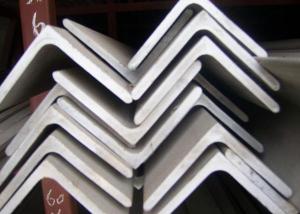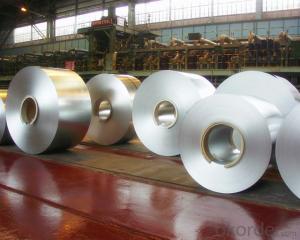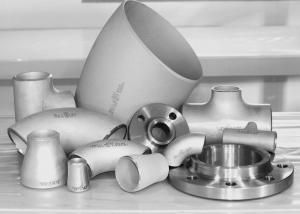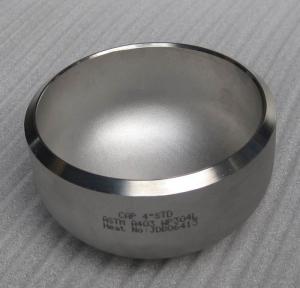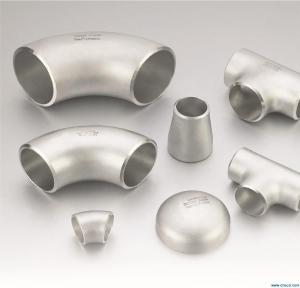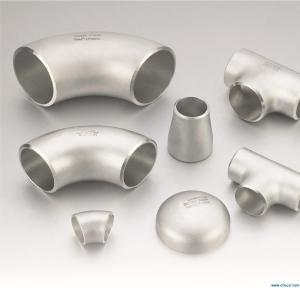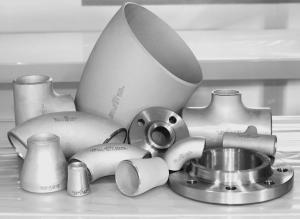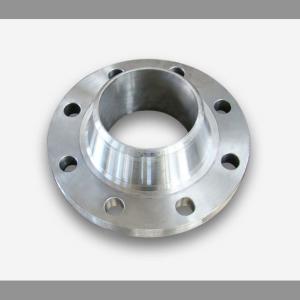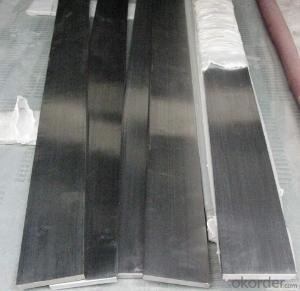Stainless Steel Fittings 304
- Loading Port:
- Shanghai Port or Others
- Payment Terms:
- TT or LC
- Min Order Qty:
- 1 pc m.t.
- Supply Capability:
- 1000 Tons Per Month m.t./month
OKorder Service Pledge
OKorder Financial Service
You Might Also Like
Stainless Steel Fittings 304
Applications Of Stainless Steel Fittings 304
1. Pipe and Tubes for petrochemical industry
2. Pharmaceutical industry
3. Food industry
4. Aviation and aerospace industry
5. Architectural decoration industry
General Information Of Stainless Steel Fittings 304
Type | BUTT-WELDING, FORGED/CASTING THREAD SOCKET-WELD. |
Item | 90° ELBOW ( LONG RADIUS / SHORT RADIUS ), EQUAL TEE,45° ELBOW ( LONG RADIUS / SHORT RADIUS ), REDUCING TEE, ROUND CAP, CONCENTRIC REDUCER, ECCENTRIC REDUCER, STUB END |
Stainless Steel Material | ASTM A403 WP304 / WP304L / WP316 / WP316L / 316 Ti / 321 / 310 / 347 / 904L |
Nickel Alloys Material | Grade: UNS 2200 (NICKEL 200), UNS 4400 (MONEL 400), UNS 8825 INCONEL (825 ), UNS 6600(INCONEL 600), UNS 6601 (INCONEL 601), UNS 6625 (INCONEL 625), UNS 10276 (HASTELLOY C 276), UNS 2201 (NICKEL 201), (ALLOY 20 / 20 CB 3) |
Alloy Steel Material | ASTM A234 WP1, WP5, WP9, WP11, WP22, WP91 |
Dimension | ANSI B16.9 / MSS SP- 43 / JIS B2313 |
Thickness | SCH5S / SCH10S / SCH40S / SCH80S / SCH 120S |
Size | 1/2" - 48" |
Method | SEAMLESS AND ERW |
Package Of Stainless Steel Fittings 304
Seaworthy packaging of export.

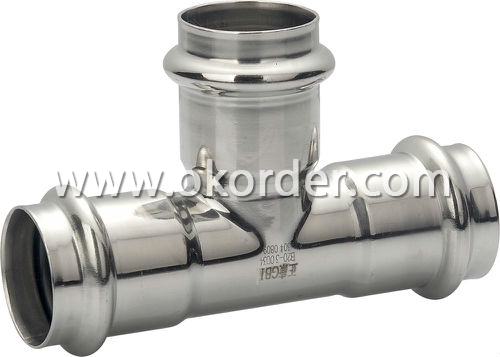
- Q:Can stainless steel flats be used in cryogenic applications?
- Yes, stainless steel flats can be used in cryogenic applications. Stainless steel has excellent low-temperature properties, such as good strength, ductility, and resistance to corrosion, making it suitable for use in cryogenic environments.
- Q:Are stainless steel flats suitable for the construction of railway bridges?
- Railway bridges can be constructed using stainless steel flats, which are well-suited for this purpose. Stainless steel is renowned for its exceptional resistance to corrosion, a critical factor in bridge construction due to exposure to the elements and contact with water. The corrosion resistance of stainless steel flats guarantees the longevity and durability of the railway bridge, resulting in lower maintenance and repair expenses over time. Moreover, stainless steel possesses remarkable strength and load-bearing capacity, making it an ideal choice for constructing railway bridges that must support heavy loads, including trains and their cargo. Its strength-to-weight ratio allows for lighter bridge designs, reducing material costs and enhancing construction efficiency. Furthermore, stainless steel flats provide design flexibility as they can be easily formed and shaped into various configurations. This feature empowers engineers to create railway bridges that meet specific requirements and adapt to environmental conditions. Additionally, stainless steel is a sustainable material option as it can be recycled entirely without losing its properties. The utilization of stainless steel flats in railway bridge construction promotes environmental sustainability and diminishes the carbon footprint associated with bridge construction. In conclusion, stainless steel flats are indeed suitable for constructing railway bridges due to their corrosion resistance, high strength, design flexibility, and sustainability. Utilizing stainless steel in bridge construction ensures enduring durability, reduced maintenance costs, and a more efficient and environmentally friendly construction process.
- Q:Can stainless steel flats be used in the renewable energy sector?
- Yes, stainless steel flats can certainly be used in the renewable energy sector. Stainless steel is known for its excellent corrosion resistance, which makes it an ideal material for various applications in the renewable energy industry. For example, stainless steel flats can be used for the construction of solar panels, wind turbines, and geothermal power plants. In solar panels, stainless steel flats can be used to create the frames and support structures due to their durability and resistance to weathering. They can withstand harsh environmental conditions such as high temperatures, humidity, and UV radiation, ensuring the longevity and reliability of solar installations. Similarly, in wind turbines, stainless steel flats can be used to manufacture the tower structures and internal components. The corrosion resistance of stainless steel ensures that the towers can withstand the exposure to the elements, including strong winds, rain, and saltwater in coastal areas where many wind farms are located. Stainless steel flats can also be utilized in geothermal power plants where hot water or steam is extracted from underground reservoirs. The material's corrosion resistance is crucial in these environments, as it prevents degradation and ensures the longevity of the power plant infrastructure. Furthermore, stainless steel flats offer design flexibility, ease of fabrication, and low maintenance requirements, making them a cost-effective choice for the renewable energy sector. Additionally, stainless steel is a sustainable material that can be recycled, aligning with the principles of renewable energy. Overall, stainless steel flats are well-suited for various applications in the renewable energy sector, providing durability, corrosion resistance, and cost-effectiveness, making them a reliable choice for the industry.
- Q:What are the weight and load-bearing capacities of stainless steel flats?
- The weight and load-bearing capacities of stainless steel flats can vary based on several factors, including the grade and thickness of the stainless steel, as well as the specific dimensions and design of the flat. Stainless steel flats are widely recognized for their strong and durable qualities, making them suitable for a wide range of uses. However, it is crucial to carefully consider the requirements and specifications of the project in order to determine the most appropriate stainless steel flat to utilize. Stainless steel flats are available in various grades, such as 304 or 316, which offer distinct mechanical properties and resistance to corrosion. The weight-bearing capacity of stainless steel flats is primarily influenced by the grade of stainless steel used, with higher grades generally possessing greater strength and load-bearing capabilities. The thickness of the stainless steel flat also plays a significant role in determining its weight-bearing capacity. Thicker flats typically have higher load-bearing capacities due to the added strength and stability they provide. Furthermore, the design and dimensions of the flat, including its width, length, and shape, can impact its load-bearing capacity. Flats with wider or longer dimensions generally possess greater weight capacities as a result of the increased surface area and support they offer. To determine the specific weight and load-bearing capacities of stainless steel flats for a particular application, it is advisable to consult engineering or manufacturer specifications. These specifications will provide detailed information about the maximum load that a specific stainless steel flat can safely support. Ultimately, it is essential to consider all relevant factors and seek professional advice to ensure that the chosen stainless steel flat meets the necessary weight and load-bearing requirements for a given project.
- Q:Are stainless steel flats suitable for staircase railings?
- Yes, stainless steel flats are highly suitable for staircase railings. They offer excellent durability, corrosion resistance, and a sleek modern appearance. Additionally, stainless steel flats can be easily customized to fit different staircase designs and provide a secure and stylish railing solution.
- Q:How are stainless steel flats measured?
- Stainless steel flats are typically measured by their width and thickness, with the width being the measurement across the flat surface and the thickness being the measurement from the top to the bottom of the flat.
- Q:Are stainless steel flats resistant to staining?
- Yes, stainless steel flats are resistant to staining due to their high chromium content, which forms a protective layer on the surface that prevents rust and corrosion.
- Q:Can stainless steel flats be used in medical applications?
- Indeed, medical applications can indeed make use of stainless steel flats. The medical field extensively incorporates stainless steel owing to its exceptional resistance to corrosion, durability, and ease of sterilization. Surgical instruments, implants, and medical devices are commonly manufactured using stainless steel, as it can be shaped and molded to meet specific needs, thus showcasing its versatility across diverse medical applications. Moreover, stainless steel is biocompatible, ensuring a reduced likelihood of adverse reactions as it is well-tolerated by the human body.
- Q:How do you determine the dimensional accuracy of stainless steel flats?
- The dimensional accuracy of stainless steel flats can be determined by measuring various parameters such as length, width, thickness, and flatness. This can be done using precision measuring instruments such as calipers, micrometers, and straight edges. Comparing the measurements with the specified dimensional tolerances will help determine if the flats meet the required accuracy standards.
- Q:Can stainless steel flats be used in pressure vessels?
- Yes, stainless steel flats can be used in pressure vessels. Stainless steel is known for its excellent corrosion resistance and high strength, making it suitable for withstanding the pressure and harsh conditions found in pressure vessels.
1. Manufacturer Overview |
|
|---|---|
| Location | Anhui,China |
| Year Established | 2003 |
| Annual Output Value | Above US$16 Million |
| Main Markets | South Korea;Japan; Europe;ASEAN;India |
| Company Certifications | ISO 9001:2000; |
2. Manufacturer Certificates |
|
|---|---|
| a) Certification Name | |
| Range | |
| Reference | |
| Validity Period | |
3. Manufacturer Capability |
|
|---|---|
| a)Trade Capacity | |
| Nearest Port | Shanghai |
| Export Percentage | 70% |
| No.of Employees in Trade Department | 160 People |
| Language Spoken: | English;Chinese;Japanese;Korea |
| b)Factory Information | |
| Factory Size: | Above 300,000 square meters |
| No. of Production Lines | Above 10 |
| Contract Manufacturing | OEM Service Offered;Design Service Offered |
| Product Price Range | Average |
Send your message to us
Stainless Steel Fittings 304
- Loading Port:
- Shanghai Port or Others
- Payment Terms:
- TT or LC
- Min Order Qty:
- 1 pc m.t.
- Supply Capability:
- 1000 Tons Per Month m.t./month
OKorder Service Pledge
OKorder Financial Service
Similar products
New products
Hot products
Hot Searches
Related keywords












